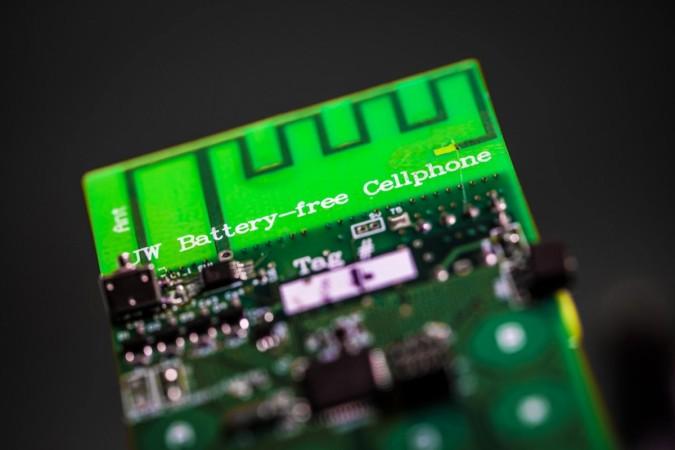Your dream of having a phone that would never die is turning into reality. A team of researchers has invented a battery-less cellphone, which consumes almost no power and has the potential to help us move beyond chargers and cords.
The prototype phone, developed by researchers at the University of Washington, is capable of harvesting the few microwatts of power it needs to function from ambient radio signals and light. The researchers even made Skype calls using the battery-free cellphone to demonstrate that its off-the-shelf components can easily receive and transmit speech.
"We've built what we believe is the first functioning cellphone that consumes almost zero power," Shyam Gollakota, one of the researchers from the University of Washington, said in a statement. "To achieve the really, really low power consumption that you need to run a phone by harvesting energy from the environment, we had to fundamentally rethink how these devices are designed."

As part of their research, the scientists completely eliminated one of the basic steps in conventional cellular transmissions: the conversion of analog signals picked up by the phone's microphone into digital data. Getting rid of this power-hungry step was necessary to design a phone that can rely on ambient power sources, according to researchers.
The new technology was detailed in a study, recently published in journal the Proceedings of the Association for Computing Machinery on Interactive, Mobile, Wearable and Ubiquitous Technologies.
The conversion of analog signals into digital data that a phone can understand requires about 800 milliwatts of energy while making a call, which is hundreds of thousands of times higher than the 3.5 microwatts required by the battery-free phone to operate.

To avoid that conversion, the phone takes advantage of tiny vibrations from its microphone during a call. An antenna connected to those components then converts those motions into changes in a standard analog radio signal emitted by a cellular base station. According to researchers, this process encodes speech patterns in reflected radio signals in a way that consumes almost no power.
Simply put, the phone uses vibrations from its microphone to encode speech patterns in the reflected signals to transmit speech. To receive speech, the device simply converts encoded radio signals into sound vibrations that are picked up by the phone's speaker.
The researchers have added a button in the prototype device that helps users to switch between "transmitting" and "listening." The scientists, who designed a custom base station as part of the research, claimed the technology could be integrated into standard cellular network infrastructure or commonly-used Wi-Fi routers to make calls.
"You could imagine in the future that all cell towers or Wi-Fi routers could come with our base station technology embedded in it," Vamsi Talla, one of co-authors of the study, said. "And if every house has a Wi-Fi router in it, you could get battery-free cellphone coverage everywhere."









![Varun Dhawan trolled for deleting his LinkedIn account 4 days after joining [Reactions]](https://data1.ibtimes.co.in/en/full/806793/varun-dhawan-trolled-deleting-his-linkedin-account-4-days-after-joining-reactions.jpg?w=220&h=138)






